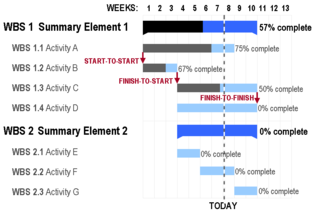
My apologies to René Magritte, as I appropriate his point, if not his iconic painting.
After I posted “Storming on Design”, it sparked a discussion with theslowdiyer around context and change. In that discussion, theslowdiyer commented:
‘you don’t adhere to a plan for any longer than it makes sense to.’
Heh, agree. I wonder if the “plan as a tool” vs. “plan as a goal in itself” discussion isn’t deserving of a post of its own 🙂
Indeed it is, even if it did take me nearly four months to get to it.
The key concept to understand, is that the plan is not the goal, merely a stated intention of how to achieve the goal (if this causes you to suspect that the words “plan” and “design” could be substituted for each other without changing the point, move to the head of the class). Magritte’s painting stated that the picture is not the thing. The map is not the territory (and if that concept seems a bit self-evident, consider the fact that Wikipedia considers it significant enough to devote over 1700 words, not counting footnotes and links, to the topic).
Conflating plan and goal is a common problem. To illustrate the difference, consider undergoing an operation. Is it your desire that the surgeon perform the procedure as planned or that your problem gets fixed? In the former scenario, your survival is optional.
This is not, however, to say that planning (or design) is useless. The output of an effective planning/design process is critical. As Joanna Young noted in her “Four Signs of Readiness – Or Not”:
I’m all for consigning the traditional 50+ pages of adminis-trivia on scope, schedule, budget, risks that requires signing in blood to the dustbin. However no organization should forego the thoughtful and hard work on determining what needs to be done, why, how, by whom, for how much – and how this will all be governed and measured as it is proceeds through sprints and/or waterfalls to delivery.
The information derived from the process (not the form, not the presentation, but the information) is critical tool for moving forward intelligently. If you have no idea of what to do, how to do it, who can do it when and for how much, you are adrift. You’re starting a trip with no idea of whether the gas tank has anything in it. Conversely, attempting to achieve 100% certainty from the outset is a fool’s errand. For any endeavor, more will be known nearer the destination. Plans without “wiggle room” are of limited usefulness as you will drift outside the cone of uncertainty from the start and never get back inside.
Having a reasonable idea of what’s acceptable variance helps determine when it’s time to abandon the current plan and go with a revised one. Planning and design are processes, not events or even phases. It’s a matter of continually monitoring context and whether our intentions are still in accordance with reality. Where the differ, reality wins. Always.
Execution isn’t blindly marching forward according to plan. It’s surfing the wave of context.








